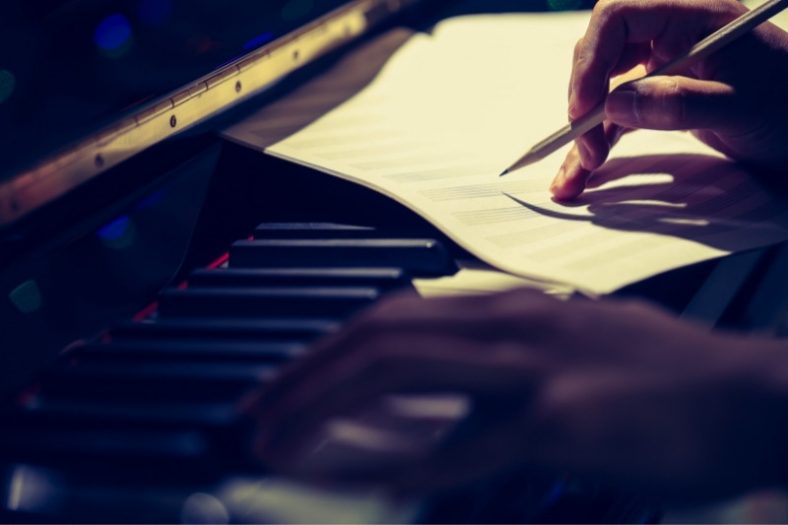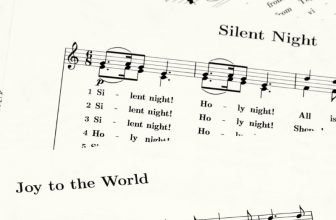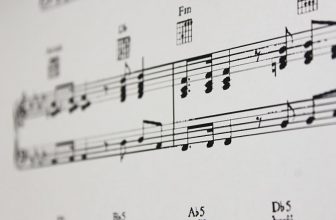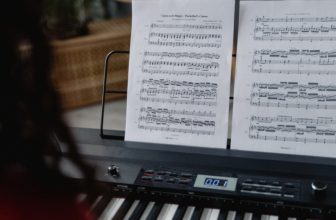What Is An Accent In Music?

In music, an accent is an emphasis on a note or chord, placed to set it apart from its surrounding notes. This emphasis on specific notes or chords of a musical phrase gives the part a unique flavor and helps better convey its emotion.
While most accents are already set in stone by the composer of the piece, they can also be added into the composition by the artists as a way of their personal interpretation. They serve the purpose of articulating or emphasizing certain parts during a musical performance.
Contents
Why are accents important in music?
Even when you speak, you stress some words or syllables more than others. Emphasizing a different word in the same sentence can often change the meaning inferred by the listener. The intonation – or the pitch – of the spoken words decides if a sentence is interpreted as a question or as a statement. Irrespective of the language used, the same set of words can be spoken in different ways, each having a unique effect or meaning.
Analogously in music, accents help transform a set of notes and chords into a powerful musical piece that can move and attract the listener.
How are accents used in music?
Accents could either be added by the performer as per their interpretation of the piece, or they could be written into the score by the composer. Although the terms used might vary, accents are used in all forms and styles of music, and across all genres and instruments.
3 Categories of Accents
There are three main categories – or families – of accents in music, depending on the parameter that is varied to emphasize the note.
1. Dynamic Accent
Dynamic accents are used to emphasize the note by making it louder or giving it a stronger and faster attack. These are the most commonly used accent types and include any accent which places added stress or ‘dynamic’-emphasis on a note. This is why dynamic accents are also often referred to as stress accents.
2. Agogic Accent
Agogic accents are used to emphasize the note by making it longer in duration. There are four kinds of agogic accents:
- A note that has a higher note value compared to its surrounding notes – such as a whole note among quarter notes.
- An extended duration of a note without changing the tempo.
- An extended duration of a note that temporarily slows down the tempo – referred to as rubato in classical music.
- A note that is played a little later than indicated by the score.
3. Tonic Accent
Tonic accents are used to emphasize the note by making it higher in pitch and are employed in the composition phase. For instance, the first note of a pop chorus is often made higher to give the perception of an increase in energy. Or, a word that is lyrically important is sung at a significantly higher pitch.
5 Types of Accents in Music Notation
There are five commonly seen types of accents in music notation. They are indicated in the score by small articulation marks above or below the note heads.
1. Accent
Referred to simply as ‘accent’, or accent mark, this accent is represented by a horizontal wedge above or below the note head. It indicates that the note or chord should be played louder and with more force.
In any meter, some beats are naturally stressed. These are called the ‘on’ beats. For instance, in 3/4 time – seen commonly in Waltz – the first beat is an ‘on’ beat while beats two and three are ‘off’ beats. While counting the time out loud, you would say ONE two three, ONE two three, thus naturally accenting the first beat.
In common time 4/4, beats one and three are considered ‘on’ beats, while beats two and four are considered ‘off’ beats. However, the first beat of any meter is stressed more and is called the downbeat.
If the accents added by the performer or composer do not correspond to the ‘on’ beats, they are said to be syncopated. A syncopated accentuation of beats two and four in 4/4 time is widely used in contemporary popular music – and is especially prevalent in rap or hip-hop.
2. Marcato
The accent represented by a vertical wedge above or below the note head is called ‘Marcato.’ It indicates that the note or chord should be played as loud or as aggressive as an accent mark, yet as briefly as a staccato.
Another name for this symbol is ‘Martellato,’ an Italian word meaning ‘hammered.’ The term ‘Martellato’ refers to a specific bowing technique employed by orchestral string musicians to create Marcato and is therefore primarily used by string players.
3. Staccato
Represented by a single dot above or below the note head, staccato indicates that the note or chord should be played with a relatively faster attack, and silenced in the latter half of its duration. This creates a stark separation between consecutive notes and gives the piece a choppy flavor.
For instance, a quarter note or crotchet in the staff notation would be played as an eighth note, followed by an eighth rest. Although the duration of a staccato note is often half the indicated note value, it largely depends on the tempo of the piece and the performer’s taste.
4. Staccatissimo
Although composers up to the time of Mozart used the Staccatissimo and Staccato accent marks interchangeably, staccatissimo usually indicates that the note should be played for a shorter duration than staccato.
Traditionally, this accent – represented by a narrow, inverted triangle above the note head – would be played for one-fourth of its indicated duration, followed by a rest for the remaining length. For instance, a half note – or minim – in the staff notation would be played as an eighth note followed by a rest for the remaining period.
5. Tenuto
Represented by a horizontal bar above or below the note head, Tenuto – meaning ‘sustained’ in Italian – implies that the note or chord should be played at full length. In other words, the player should fully sustain the note, and take care to play its full duration.
When should you accent in music?
Even if these articulation symbols are absent, musicians can add and improvise accents while performing. You can choose to accent certain notes or chords depending on the style of music, and the emotional tone of the piece. Heavy dynamic accents with staccato, for instance, would not suit a piece that is intended to be a soft lullaby.
How do you do accents on a note?
If you want to add accents separate from what is indicated in the score, you can either choose to play around with the volume of the note or the timing.
With some instruments, like the organ or harpsichord, dynamic accents are not possible. In that case, you can emphasize certain notes using agogic accents and altering the duration and onset time of the note.
Conclusion
Irrespective of the style of music and instrument you play, having a good understanding of accents will greatly enhance your performances. As your experience as a musician grows, accenting the notes of your performance will become second nature. Or, if you are a composer, you will be able to use articulation marks effectively to indicate all accents.
Using and playing accents appropriately can transform a musical piece into a performance that holds the attention of the listener throughout. It moves the audience in ways that just a series of notes and chords cannot.





